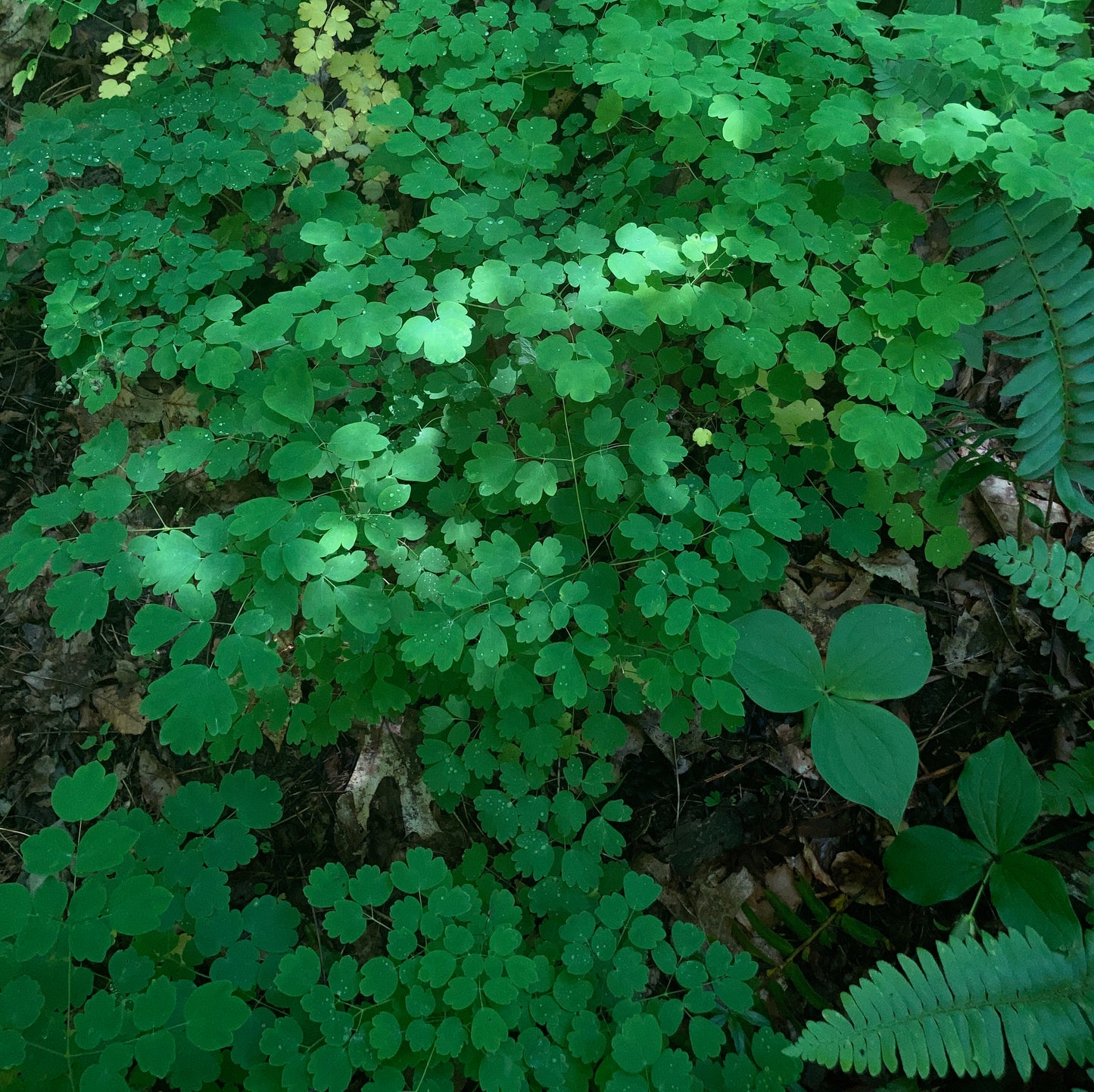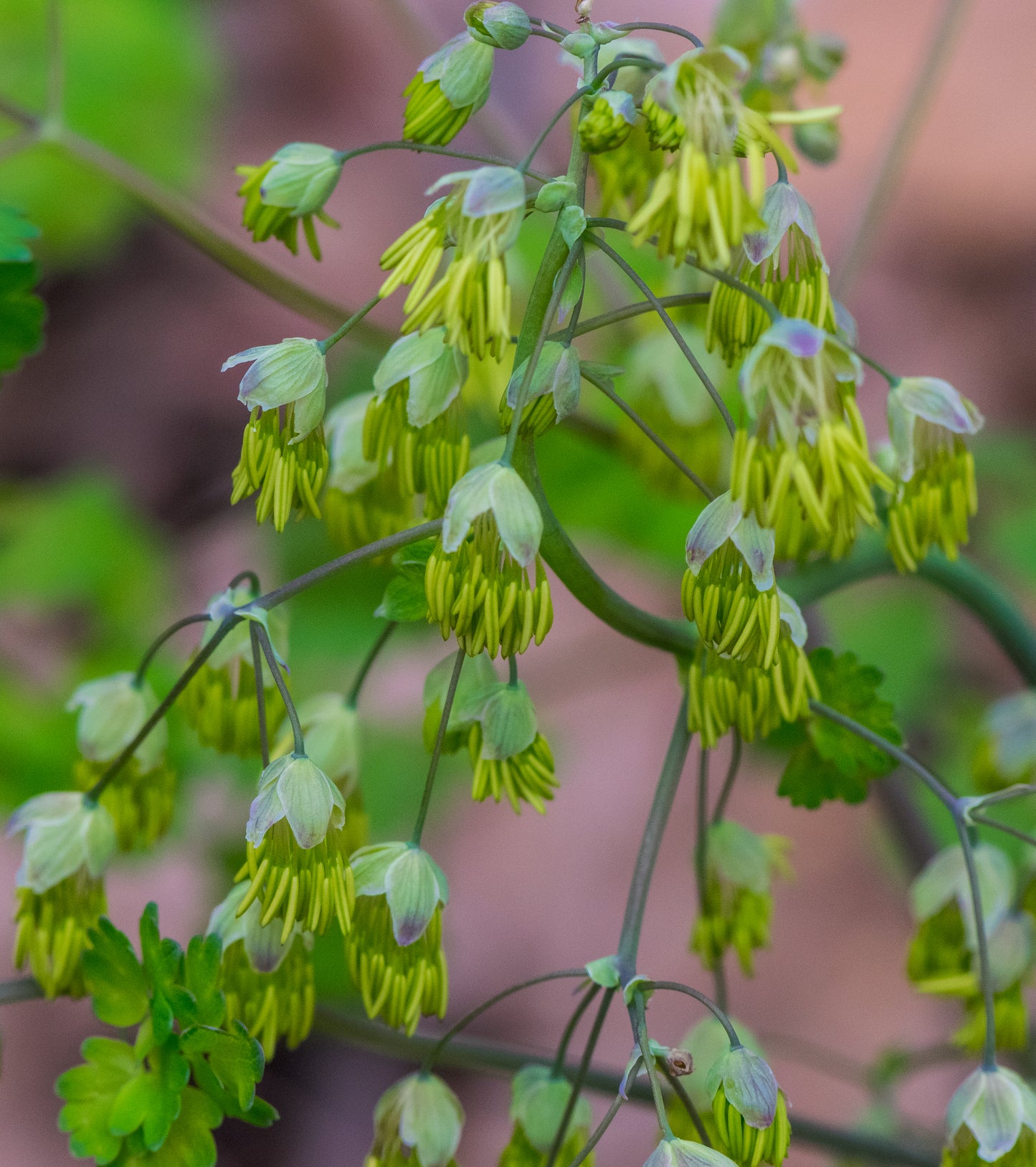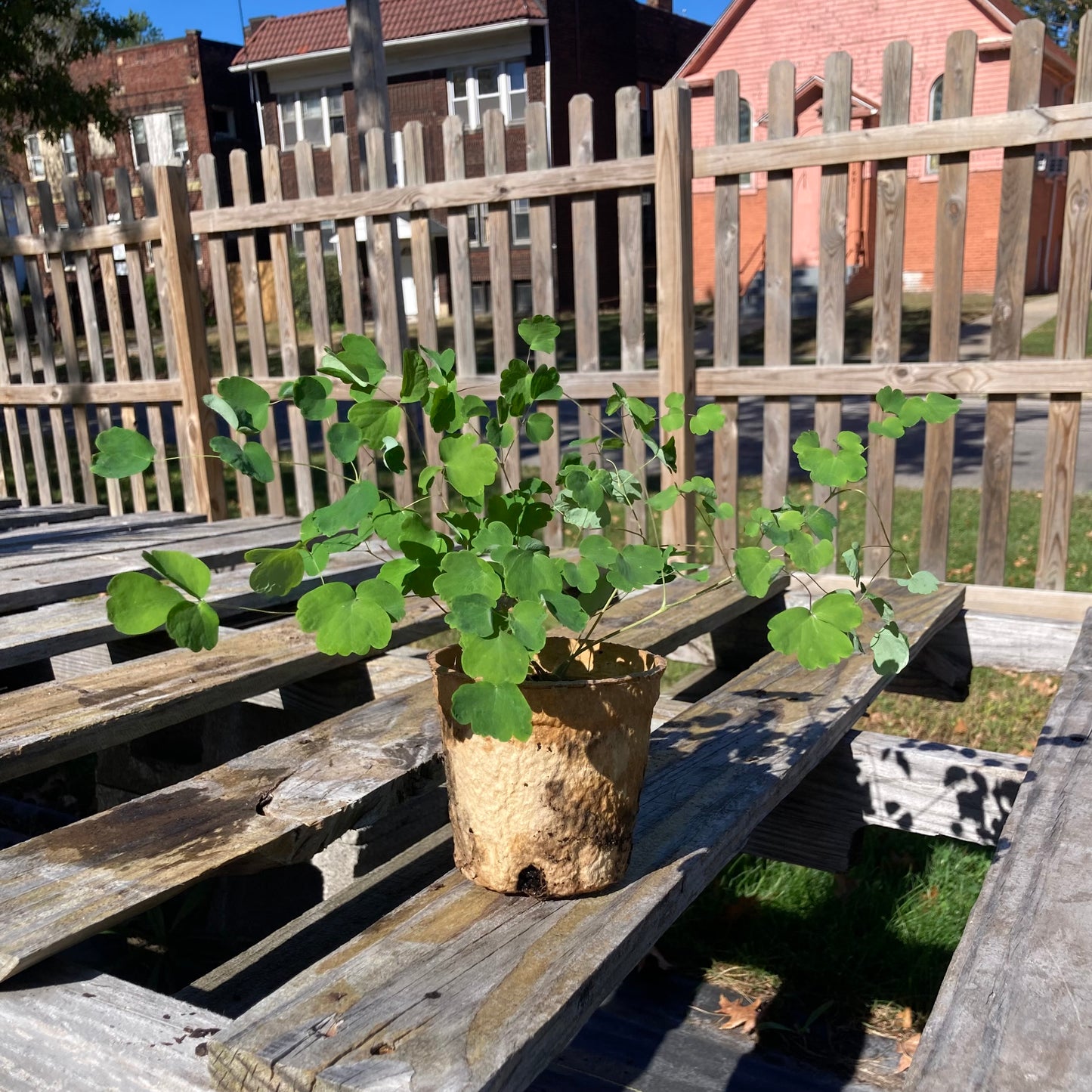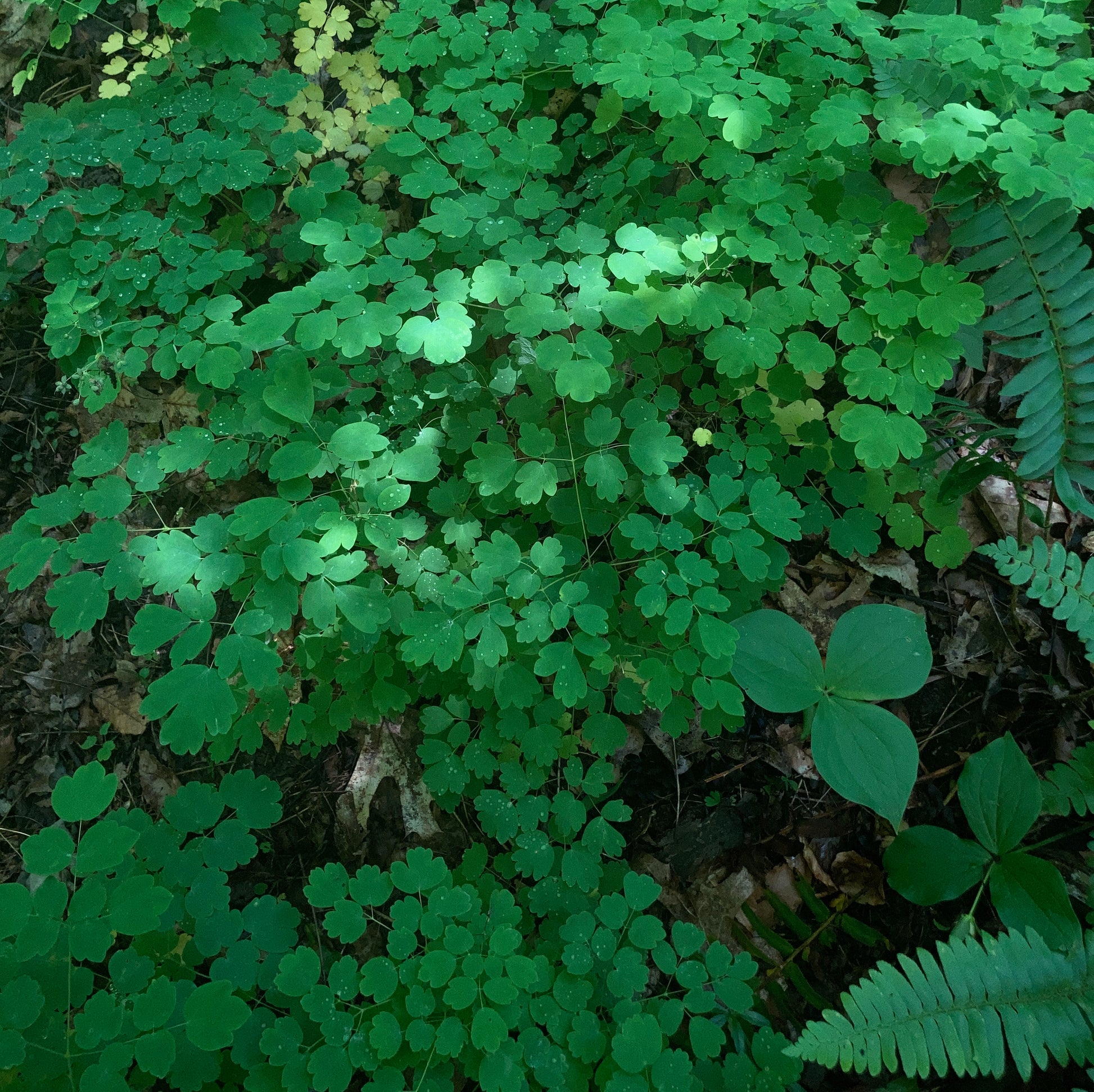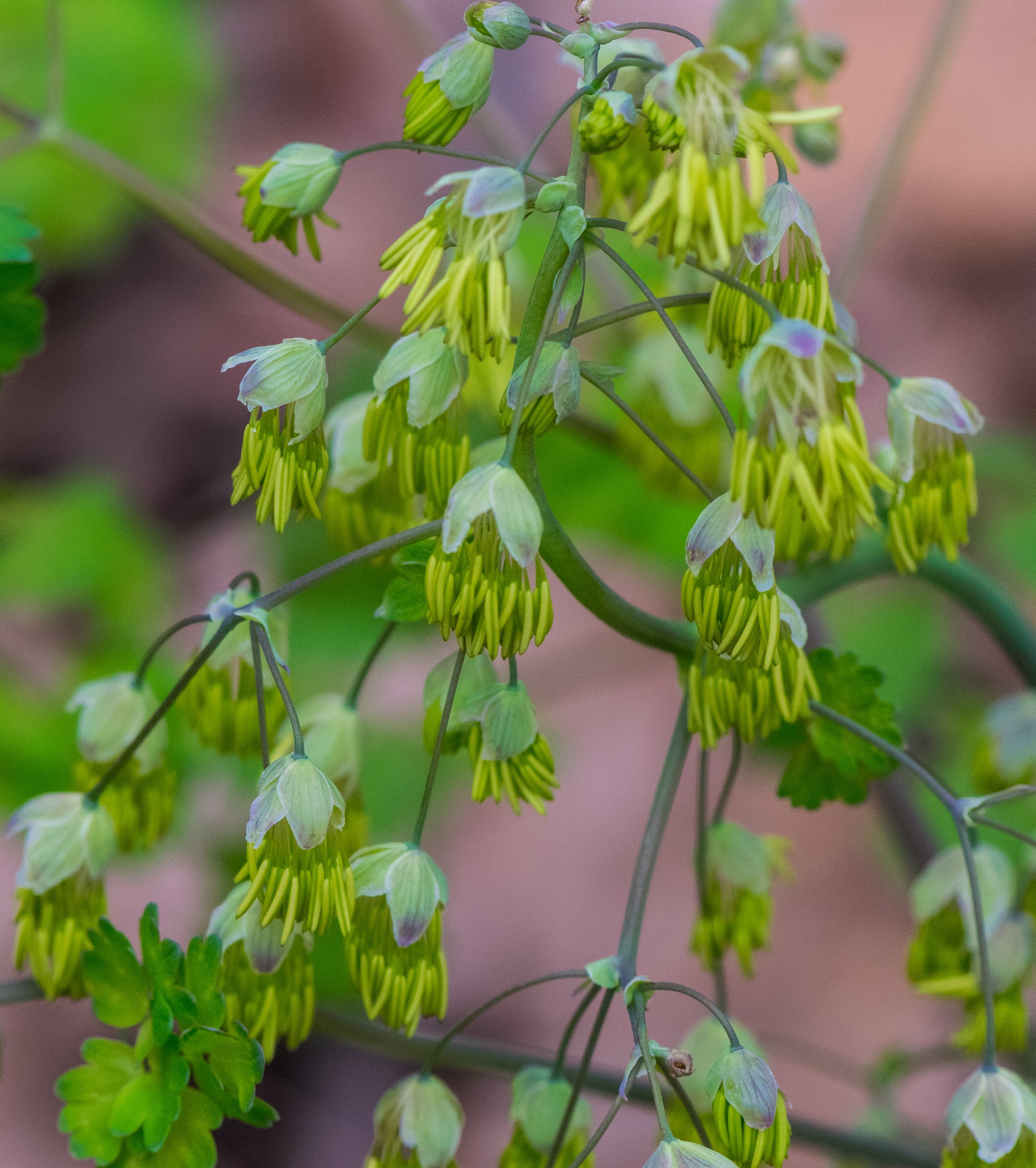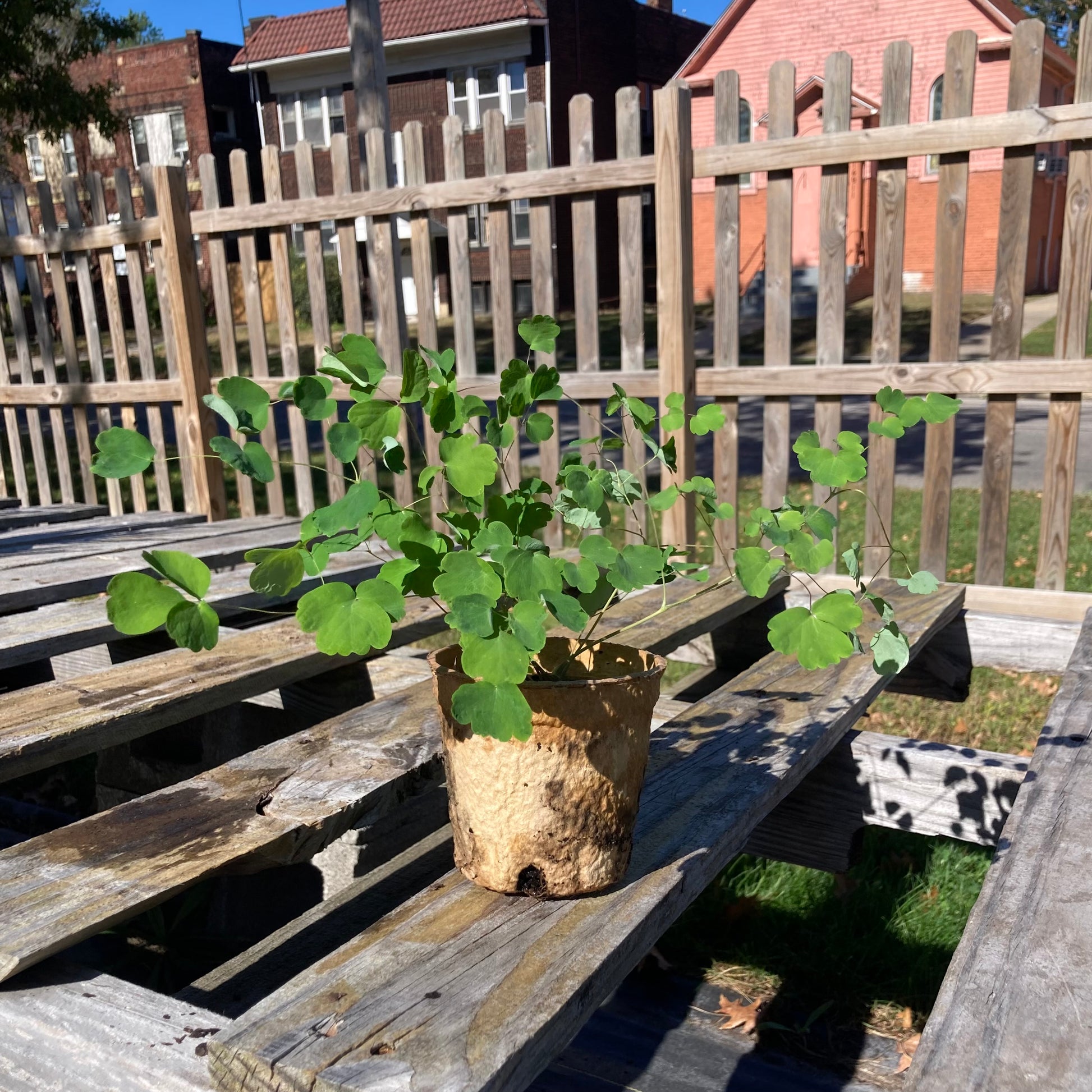Early meadow rue
Thalictrum dioicum
Thalictrum dioicum
Couldn't load pickup availability
Sun/shade: Part to full shade
Soil moisture: Medium
Height: 2'
Flowering period: April
Deer resistance: High
In April, early meadow rue adorns the tips of its branches with yellow tassels. These are the plant’s male flowers, and they are perfectly positioned to release their pollen to the breeze. If there is a female plant nearby, her flowers will likely catch some of this pollen and then produce seed later in the season.
As a wind-pollinated forest plant, early meadow rue increases its pollination success by blooming early in the spring. Prior to tree and shrub leaf-out, wind travels easier through the forest and has a heightened ability to disperse pollen. This is why wind-pollinated trees, such as oaks, also release their pollen in the springtime.
After early meadow-rue’s flowers have faded, its delicate, greyish-green foliage persists, offering a lovely textural element to the herbage of the forest floor. The plant’s rounded leaflets are spaced widely on threadlike stalks, creating a stunning impression of depth as they seem to float above the ground.
In the home landscape, early meadow rue fares best in soils of moderate moisture and under partial to full shade. Its curious flowers and elegant foliage make wonderful additions to a soft landings garden, where its early bloom-time coincides with that of Jacob’s ladder and Bishop’s cap. The plant’s modest, 2’ height, is an asset when placing it at the front of a garden or within an area of minimal space. In order to ensure that early meadow rue produces seed, plant several individuals within a few feet of one another.
As a wind-pollinated plant, early meadow rue does not feed pollinators, but its foliage is a food source for the colorful caterpillars of the meadow rue owlet moth as well as 14 other caterpillar species. Although the adult habits of the meadow rue owlet moth are largely unknown, it likely feeds by sucking juices from fruit. It belongs to a genus known as the vampire moths, which are named for the habit – displayed by some Asian species – of drinking the blood of mammals (including humans!).
Photo 1 by Julie Slater. Photo 2 by Joshua Mayer.
